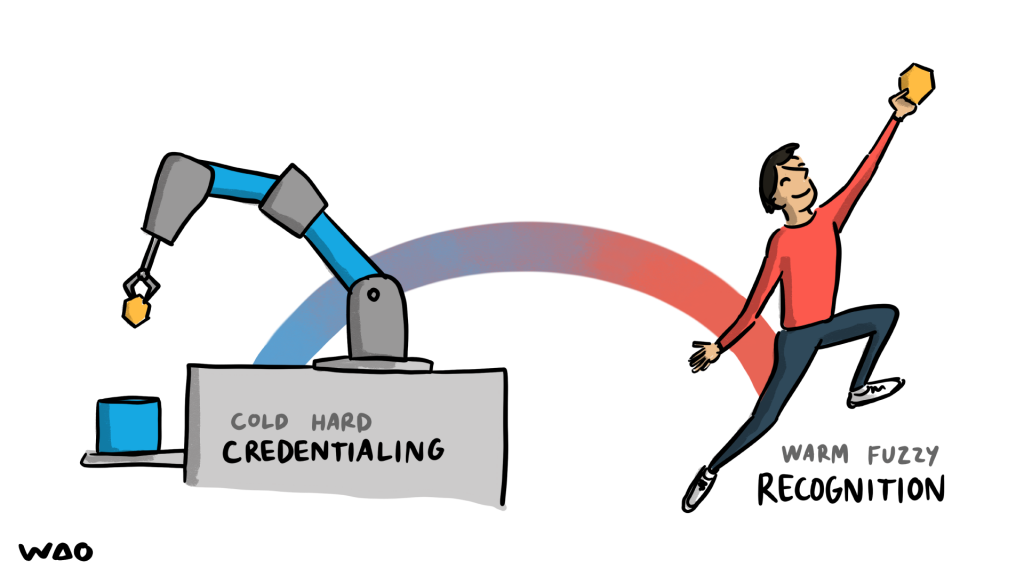Realigning Microcredentials with Open Badges

In a previous blog post, I discussed how microcredentials have deviated from Mozilla’s original Open Badges vision. This post explores some ways in which microcredentials can be realigned with those initial goals and better empower individuals and communities.
Firstly, it’s essential to emphasise the importance of informal and non-formal learning. Experiences such as volunteer work, self-directed online learning, and engaging in communities of practice have immense value. Microcredential issuers should think more widely to recognise a broad range of learning, allowing individuals to showcase not only their knowledge, skills, and understanding, but also their behaviours, relationships, and experiences.
Interoperability and decentralisation are crucial for a thriving microcredential ecosystem. Open standards and protocols can enable seamless sharing and displaying of badges across platforms. Microcredential providers need to think not only about their own issuing, but that of others. How can learners showcase learning that has taken place elsewhere? In addition, how can we use approaches such as Creative Commons licensing to encourage the reuse and remix of badge metadata? The move to Verifiable Credentials will allow badges without images, which will make collaboration around taxonomies even more important.
Thirdly, accessibility and reducing barriers to entry are vital in countering the commercialisation of microcredentials. Universities and other microcredential providers are no doubt feeling the squeeze in the current economy, but free or low-cost learning opportunities make for a more inclusive learning ecosystem. After all, the original vision for Open Badges was to widen participation and recognise different kinds of learning.
Open Recognition plays a key role in realigning microcredentials with the initial Mozilla Open Badges white paper. Along with approaches such as ungrading and Recognition of Prior Learning (RPL), we can focus on formative aspects such as learner growth and development, rather than solely on traditional summative evaluation methods. This approach can help build trust and ensure microcredentials are meaningful to employers, educators, and learners alike.
Finally, building a diverse ecosystem is essential. At the moment, microcredentialing seems to be almost entirely about the formal education to employment pipeline. However, wider collaboration can ensure the relevance, sustainability, and utility of microcredentials. Community-driven initiatives and partnerships can foster innovation, create new opportunities, and encourage widespread adoption of the original Open Badges vision.
So, in conclusion, realigning microcredentials with the original Open Badges vision has the potential to empower learners, recognise diverse skills, and foster a more accessible recognition ecosystem. By implementing the strategies discussed in this post, we can contribute to the revitalisation of the Open Badges movement and create a better future for learners worldwide.
Image CC BY-ND Visual Thinkery for WAO

